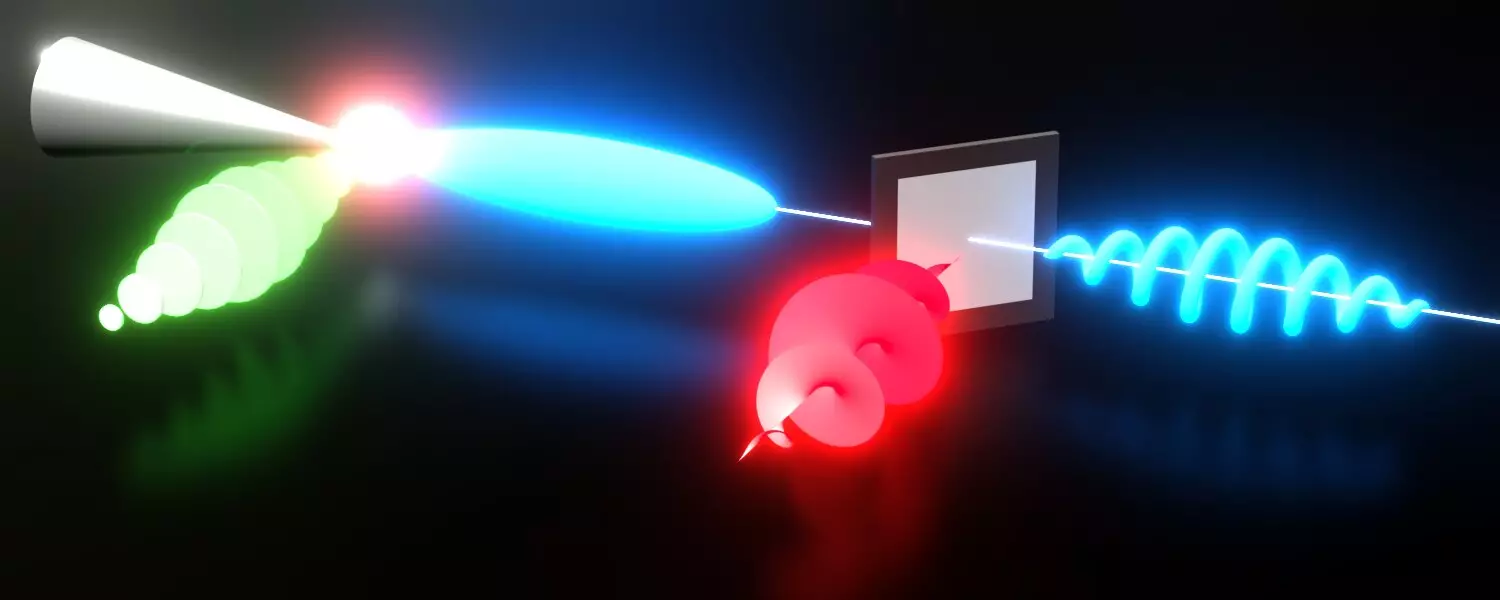Chirality, a concept often overlooked in everyday discussions about the universe, plays a pivotal role in our understanding of the physical world. If you’ve ever positioned your hands with palms together, you might have noticed that your left and right hands cannot perfectly align—this geometric property is what scientists refer to as chirality. Recently, researchers from the University of Konstanz achieved an unprecedented feat in quantum physics by imprinting this three-dimensional chirality onto the wave function of an electron. This manipulation not only sheds light on the fundamental nature of particles like electrons but also opens doors to potential technological applications that could change our interaction with the quantum world.
Fundamentally, chirality in physics relates to asymmetrical structures—those that cannot be superimposed onto their mirror image. The implications resonate deeply within various domains, from frame-shaping theories in elementary particle physics to the distinct biological effects drugs can exhibit based on their molecular chirality. The recent advances in chirality manipulation take us a step closer to fully understanding how these subtle geometric distinctions can drive significant scientific breakthroughs.
Engineering Electron Chirality
The creation of chiral patterns in an electron’s matter wave signifies a technological leap forward. Traditionally, scientists have moved electrons along spiral trajectories or generated vortex beams; however, the Konstanz team’s innovation lies in creating de Broglie waves that exhibit this unique chiral pattern without relying on spin dynamics. By employing a combination of ultrafast transmission electron microscopy and laser technology, researchers managed to sculpt the wave functions of electrons into left-handed and right-handed coils, fundamentally altering their expected properties of charge and mass.
To achieve this, the team generated femtosecond electron pulses and interacted them with spirally modulated laser fields, effectively accelerating and decelerating electrons depending on their azimuthal position. The ingenious use of silicon nitride membranes was crucial, facilitating a previously unachievable interaction between electrons and laser photons. This breakthrough underscores a significant challenge in physics: the conservation of energy and momentum in a system where traditional interactions would normally fail. Yet, through meticulous design and execution, the team managed to mold the geometries of electrons, thereby generating chiral states without invoking a direct link to their spin.
Practical Implications for Science and Technology
The implications of producing chiral matter waves extend across fundamental physics and various application-based fields. From quantum optics to cutting-edge advancements in electron microscopy, the ability to engineer electron beams with chiral properties suggests revolutionary possibilities. The experiment confirmed that the chiral coils interacted reliably with other chiral materials, exhibiting behavior that included constructive and destructive interference based on the specific chirality of the materials engaged.
This characteristic could lead to significant advancements in chiral sensors and electron optical tweezers, potentially improving how we manipulate particles on the atomic scale. In therapeutic drug development, understanding chiral interactions may usher in groundbreaking approaches for pharmaceutical applications, distinguishing between beneficial and harmful compounds more effectively.
Moreover, the researchers envision that this technique could be adapted to other elementary particles beyond electrons, suggesting a rich avenue for exploration in particle physics. The quest to understand which particles might also embody such chiral forms could yield insights into the cosmos and our fundamental interaction with nature.
The Future of Chirality in Quantum Systems
The researchers aim to advance their work through attosecond electron imaging and two-electron microscopy, diving deeper into how chiral light interacts with chiral matter. The concept of shaping particles into more complex chiral forms invites further research on not only particle dynamics but also broader theories in physics, including cosmological models that might hinge on these properties.
As we stand on the brink of potential quantum revolutions fueled by such innovations, one must consider the ethical implications. The frontier of science brings unparalleled possibilities, yet each step towards heralding new technologies must be met with a critical eye. The exciting developments in the chiral manipulation of elementary particles provide a glimpse of transformative future applications—yet we must tread carefully to ensure these tools are wielded judiciously in service of humanity.
In sum, the ability to imprint chirality onto electrons not only reshapes our understanding of fundamental particle behavior but also equips researchers with powerfully new tools to probe the complexities of quantum systems, fostering a deeper understanding of the universe we inhabit.


Leave a Reply